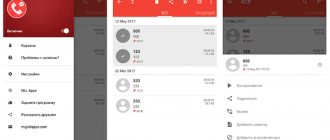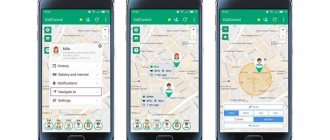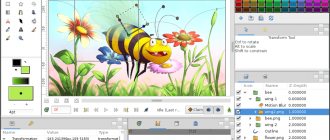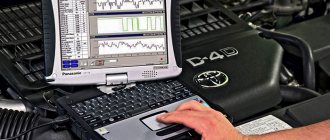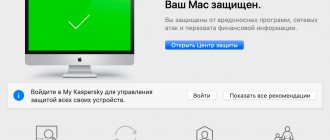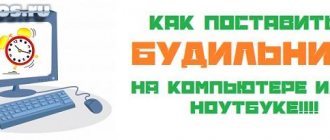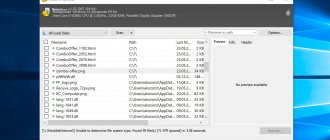A warehouse accounting program is specialized software for automating inventory accounting, which allows you to analyze the receipt, issue or absence of goods and establish communication both between suppliers and warehouse employees, and between individual warehouses.
Warehouse accounting programs are usually multifunctional:
- Report on whether goods are in warehouse premises;
- Report on the movement of goods;
- Uploading price lists by suppliers;
- Communication between supplier and warehouse;
- Communication between warehouses;
- Separate collection of orders from suppliers;
- Analysis of product sales for different time and seasonal periods;
- Analysis of expenses for different periods of the season;
- Monitoring price changes during purchases and adjusting retail prices in accordance with specified parameters;
- Sometimes, the formation of accompanying documentation.
This complex, painstaking analytical work is too labor-intensive to carry out on your own, because it requires processing a huge amount of information, in addition to carefully monitoring the availability of goods in the warehouse. It is also time-consuming to receive products and label them manually on a daily basis. Therefore, every business needs a warehouse accounting program. Based on daily sales analysis, you can more accurately plan further business steps to optimize the turnover of materials and increase production productivity.
There are many offers of warehouse programs on the market: with different types of information storage, with a different interface, as well as paid and free. But when choosing a program, it is important to remember that investments in paid software will quickly pay for themselves, reducing the costs of unnecessary mechanical work of personnel and the costs associated with idle stock, expiration of goods and incorrect assessment of warehouse capabilities.
What a good inventory software should be able to do
When choosing a commodity accounting system, you should pay attention to the following points:
- Compatible with other programs and equipment. A smart program should integrate with CRM systems, online cash registers, online accounting and other programs.
- Real-time updates. Sold, moved or written off goods must be immediately written off from inventory.
- Ability to upload and download the database to other services. For example, if you set up the program to work together with a CRM system, you can personalize discounts and loyalty programs.
- Use of cloud technologies. It is better if the data is stored on the service provider's server. This allows you to access information from any device connected to the Internet.
Menu structure of the My Warehouse program
Many experts note the simplicity and ease of user learning of the basic tools that allow you to use the functions of My Warehouse.
The program interface can be mastered in just a few minutes; there is nothing superfluous in it (but at the same time, all the options are necessary). In principle, even an inexperienced user can master the basic functions of the product in less than half an hour (and then study the details, which is also quite simple due to the presence of detailed documentation for the program).
The main menu items of the program include:
- Option "Indicators".
It is assumed that it will be regularly used by the heads of the enterprise and departments to monitor the work of subordinate employees. This tab reflects information about sales performance, as well as about the actions of employees aimed at achieving certain work results (which, as a rule, are confirmed by the preparation of various documents - information about which can be viewed in the corresponding tab).
- “Purchases” option.
This shows information about the movement of goods (the status of orders to contractors) - from the supplier to the enterprise (and vice versa, if a return occurs), their balances at the enterprise.
- "Sales" option.
In turn, information about the movement of goods from the enterprise to counterparties is shown here. A sales funnel is clearly shown - a sequence of facts that reflect the interaction of a company with a counterparty, starting from the first contact.
Based on information on the sales funnel, an enterprise can track which area it has not worked very effectively (by discovering, for example, that there is a consistently low conversion rate on a particular sales channel). The sales funnel can be deployed in relation to orders or contractors. The billing period of interest to the user is set - day, week, month or free interval. You can view information about the employees who participated in the preparation of the transaction.
- “Products” option.
Here, information about the goods sold by the company is disclosed in detail. The quantity of each of them, movement, cost and other important data are shown.
- Option "Counterparties".
Here information on customers (suppliers) of the enterprise is detailed.
The “Retail” option is notable – first of all, for the clarity of analytical indicators. Thus, information about profitability at each trading site is available to the user. Data on invoices, missed deliveries, and invoices are also reflected.
Other notable options include the “Tasks” option. It specifies tasks addressed to a specific employee and displays information about their completion.
The “Money” option reflects in detail information about the movement of capital in the enterprise. Also noteworthy is the detailed disclosure of data on the company’s profits and losses: you can select a calculation period corresponding to one day, week, month, free interval - which allows you to analyze the reasons for the current financial results. It is possible to display profitability indicators in real time.
The profit and loss figures are presented in the context of the following key financial indicators:
- revenue;
- cost;
- gross profit;
- operating expenses (with their subsequent detailing - for example, expenses associated with rent, salaries, payment of various commissions);
- operating profit;
- net profit.
Information about taxes is also shown - as part of expenses, the amount of which affects net profit.
ECAM
A popular cloud-based online warehouse and trade accounting system from EKAM. In addition to the inventory register itself, it is possible to purchase cash registers and auxiliary equipment for trading.
What “EKAM.Accounting” can do:
- write-offs of goods during sales occur in real time - the database is updated instantly;
- built-in loyalty program. Its use allows flexible work with discounts and special offers. Bonuses can be personalized and each client can be offered their own discount option;
- for catering there is a technical map function;
- analytics of financial indicators.
“EKAM.Accounting” tariffs:
- tariff “My cash desk” , costing 480 rubles per month . The tariff plan provides an online cash register under 54 Federal Laws with access to an unlimited number of cashiers;
- tariff plan “My Accounting” . Supports loyalty programs, keeps customer records and is compatible with banking programs. Tariff price - from 640 rubles per month ;
- tariff plan for 1280 rubles per month . The difference from the previous one is the availability of CCP and the ability to create technical maps;
- “Corporate” tariff costs 3,680 rubles per month . The set includes 3 cash registers, the ability to be used by 10 or more employees, and a warehouse accounting system.
MyWarehouse
The program can be used as a stand-alone product or in combination with a CRM system and trade automation service.
Advantages of the “MySklad” program:
- can be used in both wholesale and retail trade and other areas;
- access from anywhere in the world where there is Internet;
- work on Windows, Linux, Android and iOS operating systems;
- the program itself can make requests to suppliers;
- determining the cost of goods;
- balance control, sales analysis.
Tariffs “MySklad”:
- free version for one company or individual entrepreneur. The data storage volume is limited to 50 MB, the number of products is limited to 10 thousand;
- basic: 2 legal entities, up to half a gigabyte for data storage. Cost - from 1000 rubles per month ;
- “Professional” tariff . Possibility to enter up to ten organizations into the system, 2 GB for storing information. The cost of the tariff is from 2900 rubles per month ;
- "Corporate". Unlimited number of legal entities, 10,000 megabytes of cloud storage space, CRM system. Price - from 6900 rubles .
1C: Trade and warehouse
Trade and warehouse accounting system included in the “1C: Enterprise 8” program . Focused primarily on large businesses with a wide range of products and production processes.
Advantages of “1C: Trade and Warehouse”:
- full automation of warehouse and trade operations of any type;
- automation of wholesale and retail trade;
- extensive customizable system: inventory accounting can be distributed among different structural divisions of the enterprise. If you have several workshops, departments and subdepartments, “1C” is exactly what you need;
- automatic document management;
- function of reserving goods in the warehouse;
- accounting of consignment goods;
- accounting for loans, including foreign currency ones;
- keeping records of imported goods according to the customs declaration;
- control of settlements in foreign currency with foreign counterparties;
- data exchange with banks and tax authorities;
- integration with online cash registers and other retail equipment;
- other functions.
A 1C: Enterprise client license from partner companies costs about 6,300 rubles per 1 workplace . There are cloud options as well as enterprise solutions.
Automation of trade using the My Warehouse program
So, in its modern modification, the My Warehouse program is a comprehensive product for trade, designed to solve the following problems:
- related to accounting, sales management, analytics;
- with payments made at the checkout.
Essentially, the product is tied to a workplace - a person responsible, respectively, for accounting, sales and analytics, or working at the checkout. At the same time, the number of such workplaces (the number of retail outlets owned by the program user) is unlimited at some tariffs.
For a wholesale or retail enterprise, My Warehouse may be useful in terms of adaptability:
- to accurately measure the quantity of goods that are in stock (or in reserves);
- to ensure document flow (represented by contracts, invoices, commercial proposals and other documents used in business) within the enterprise and with counterparties;
- conducting sales analytics;
- to carry out accounting of goods using identifiers (unique numbers, barcodes);
- to processing received applications from counterparties;
- to maintain a client base;
- to management of mutual settlements;
- to carry out mailings.
In terms of functionality that adapts the My Warehouse service to the needs of an online store, the product is notable, first of all, for its exceptionally high level of adaptability to integration with CRM platforms.
This integration allows the user of My Warehouse to almost instantly receive directly into their account information about orders and other customer requests made on the online store website.
The program displays information about the status of the order, where the courier is located (if he is responsible for delivery), and payment information. Of course, analytics are also available for the online store. You can connect several online stores to one user account in My Warehouse.
All the features of My Warehouse software for trade management can be found HERE.
Another largest segment in which the My Warehouse product is in demand is small and medium-sized production. Let's get acquainted with the specifics of its use there.
Contour.Market
Another popular commodity accounting system from the domestic manufacturer “Kontur”. Usually the system works in conjunction with an online cash register.
Advantages of “Kontur.Market”:
- online accounting of product and warehouse balances;
- work in the EGAIS system for recording the turnover of alcohol-containing products;
- integration of goods with online cash register. The system communicates with the cash register and the name is stamped on the receipt in accordance with 54 Federal Laws;
- the ability to print price tags and generate barcodes for any product;
- online sales analytics for each outlet;
- compatibility with all popular services;
- easy loading of invoices;
- convenient personal account for the manager.
The accounting system “Kontur.Market” has 3 tariff plans:
- tariff – from 4,700 rubles per year for one point of sale. The tariff allows you to keep inventory records and send data to the online cash register, print price tags and prepare sales reports. The service also includes integration with 1C and 24/7 technical support;
- “Optimal” tariff per point per year. The plan has everything that is in the “Basic” plus the ability to take inventory, calculate profitability for the period, a product report and access to the movement of goods;
- “Premium” plan for 1 outlet.
Purchasing and supply management
In terms of procurement, My Warehouse is equipped with:
- to generating orders for specific suppliers;
- to exercise control over balances of existing positions;
- to keeping records of payments and returns.
It is noteworthy that the generation of data reflecting the company’s need for purchases of certain items is carried out taking into account the dynamics of sales of the corresponding items (if we are talking about retail). The cost of the position, its profitability, profitability, and the number of sales per day are shown. In terms of inventory, the balance and the number of days for which it will last is disclosed based on the current sales dynamics.
In the My Warehouse program, you can configure the display of the quantity of goods that should be sold over a certain period. Based on this quantity, the program can recommend the optimal volume of additional purchases of such goods so that there is no shortage.
The user of My Warehouse, who is himself a supplier, also has access to a wide range of options for monitoring the fulfillment of his obligations to customers.
In terms of organizing their own deliveries, the My Warehouse user can use the program’s capabilities to solve problems related to:
- with reserving the required quantity of goods for the upcoming shipment;
- with tracking the status of each order;
- with optimal distribution of goods to different customers (sets for shipment).
The program displays information about invoices, payments, and shipments for each product.
LiteBox
Cloud system for business automation, warehouse and commodity accounting, as well as cash register services. Allows you not only to maintain product databases and comply with 54 Federal Laws, but also to use marketing tools provided by the developer.
LiteBox features:
- posting of alcoholic beverages according to the requirements of the Unified State Automated Information System (USAIS system) (confirmation of suppliers' invoices, generation of quarterly reports);
- tracking the movement of goods between warehouses, stores and retail outlets;
- simple and convenient inventory;
- accounting for regrading;
- write-off, reservation of products in the warehouse;
- online analytics;
- updating warehouse balances in real time. The sold product is immediately written off from the warehouse;
- synchronization with the online store and unloading of goods;
- ability to import products from xml and csv;
- integration with 1C;
- it is possible to maintain databases in various units of measurement - pieces, liters, kilograms, and so on;
- accounting of goods under serial numbers.
Cost and tariff plans:
- free basic plan. Access to the main functionality is provided: creation and maintenance of a product database, analytics, as well as automatic updates based on changes in legislation;
- “Pro” tariff . Includes warehouse accounting, work with counterparties, pricing according to a given algorithm, personal loyalty programs and other functions. Cost - from 500 rubles per month ;
- “Acquiring” tariff . A cash register and technical support are included as a free add-on. The cost of the “Acquiring” tariff plan is up to 800 rubles per month .
Specific application for production
One of the key functions of My Warehouse in terms of production management is the support of technological maps, which include information about the costs of production. Thanks to the data from these cards, the user of My Warehouse will be aware of all the parameters of the cost of production and will be able to track various quantitative parameters that affect it (for example, the volume of raw materials and materials consumed).
Effective cost accounting using the built-in tools of My Warehouse will allow the company to organize production, minimizing errors in economic calculations, downtime on lines, and delays in making requests to suppliers.
Another important function of My Warehouse for production is related to the accounting of various business transactions. Thus, the following operations are recorded in the program database:
- receipt of raw materials and supplies from suppliers;
- sending raw materials and materials from the warehouse to production lines;
- movement of raw materials and materials in various areas of production;
- sending finished products to the warehouse to customers.
The program also has functionality for accounting for mutual settlements between an enterprise and its counterparties, and tools for conducting commission trading.
My Warehouse is an excellent tool for controlling purchases (as well as deliveries to contractors). Let's look at its key capabilities in this area.
Atol Sigma
Popular sales automation service. The solution is suitable for all main types of business: a stationary store, distance selling, beauty salon.
Atol Sigma features:
- managing orders, prices and discounts;
- the ability to confirm alcohol invoices in the EGAIS system;
- simplified inventory of warehouse balances;
- reports and analytics;
- unlimited server space for storing information;
- integration with 1C and excel;
- ability to manage prices;
- the ability to draw up technological maps and manage the properties of goods;
- simple and convenient search in the product database using a filter system;
- accounting of financial indicators, monitoring of goods suppliers.
Tariff plans:
- “Start” package , costing from 2900 rubles per year . Includes hardware and software. There is no commodity accounting system at this tariff;
- tariff plan “Development” . Also includes the purchase of hardware and software. The tariff includes a warehouse accounting and analytics system, integration with 1C and export of documents to XLS and CSV, as well as acquiring. The cost of the “Development” tariff plan is from 5,900 rubles per year ;
- “Business” tariff plan costs from 11,900 rubles per year . The package includes the same as the “Development” tariff, plus the ability to draw up technological maps, the ability to manage a franchise network and upload the product database after the subscription expires. In addition, there is a function for managing loyalty programs;
- free trial plan available from the second year of use.
How to choose a warehouse accounting program
To choose the right service or program, consider the key capabilities that the software provides. They are described on the program website, and the sales department will also talk about them.
A set of operations.
If you have a small business and need minimal reports to know income/expenses and balances, it will be difficult for you to work in a powerful warehouse program. And there is no need to overpay for extra functions. Decide on the set of necessary operations and reports and look for software with a small margin for growth. Here is a list of the main features that entrepreneurs expect from a warehouse program:
- auto-filling of documents based on existing documents, accounting, barcodes, RFID tags;
- simple uploading of warehouse documents in familiar formats *.xls, *.pdf;
- fast distribution of documents by e-mail or through electronic document management;
- control over the status of the product, its quantity and expiration date;
- quickly search for the necessary data on a product or supplier;
- tools for planning purchases depending on the volume of balances;
- analytical reports on sales, deliveries, daily revenue, demand;
- tracking the physical movement of goods (if there are means of identification);
- inventory tools;
- automatic setting of the sales price according to your markup;
- downloading supplier price lists to make it easier to work with items;
- drawing up technological maps, relevant for catering.
Industry specialization.
There are universal programs for small businesses, but many solutions are better suited, for example, to small retail, production, and logistics. The larger the business, the more work processes depend on the specifics of the industry, and then it is better to choose software that is best suited to your segment.
Price.
Most often, a warehouse program is paid monthly, but there are also annual rates. Decide how much you are willing to pay.
Free tariff, discounts.
Many simple programs for maintaining warehouse records can be downloaded for free; they are quite suitable for a small warehouse. A tariff with minimal functionality without any payment is offered by the services “My Warehouse”, “Business.ru”, “LiteBox”, “CloudShop”, “Big Bird”. Others let you work for free during a test period, and many also have installment plans and discounts, for example, for connecting a second point of sale or paying for two years in advance.
Technical support.
Ideally, it’s free and 24/7, with multiple communication channels.
Local or cloud system.
For remote control and work with several warehouses and stores, a cloud service is suitable. Local systems are usually installed for large companies with a network of warehouses and tens of thousands of items of goods, for which it is important to automate business processes as much as possible.
Access levels for employees.
This will allow you, the storekeeper, managers, and accountants to work in the program. Everyone will be able to perform their tasks and exchange messages with colleagues.
Additional modules and open API.
Optional modules: CMS, logistics, accounting - help solve additional problems, for example, introducing a discount system. And the open API will allow you to customize the program to suit your individual needs.
Possibility of integration with other software.
It will help to synchronize the warehouse program with your cash register, accounting department, and online store.
User-friendly interface and ease of learning.
It should be easy and convenient for you and your staff to work in the program, switch between windows, and use different tools.
Stable work.
The program must have system requirements that suit you so that it does not freeze, losing the last data entered.
Full demo version.
If you can try a demo version with full features for at least a week for free, it will make your choice easier.
CloudShop
Cloud-based online program for automating sales of a retail store, salon or catering establishment. The application is used by more than 3,000 entrepreneurs from 32 countries. Includes everything you need for easy sales and inventory control.
CloudShop features:
- a full range of warehouse and commodity accounting: movement and write-off of goods, procurement accounting and light inventory;
- support of a product database of 13 million barcodes;
- the ability to work with discount and discount cards and loyalty programs;
- the ability to log into your personal account from anywhere in the world where there is Internet access. Convenient mobile application for Android devices;
- work in the EGAIS alcohol accounting system (draft beer store);
- import of product databases from any services, including Word and Excel tables, as well as catalogs on the website;
- the ability to combine products into groups by properties;
- personnel control. The system helps to identify the most effective employees who made the maximum sales for the period;
- detailed analytics of financial indicators.
CloudShop tariffs:
- free tariff “Basic” . Possibility of connecting 1 store with 1 employee. The tariff provides all the necessary functions, but with minor restrictions. There are 3 types of reports available out of 10 possible: reports by days, weeks and months;
- “Simple” tariff plan . The package already includes an online cash register. Possibility of simultaneous work of up to 3 employees of 1 store. The online showcase function and all types of reports are available: period report, product report, sales, and so on. There is a technical support chat in your personal account;
- “Standard” tariff . You can connect up to 3 stores and up to 5 employees to the tariff. The price also includes email reports and an online cash register under 54 Federal Laws;
- “Unlimited” tariff plan . Provides for the simultaneous operation of an unlimited number of stores and any number of employees. The price includes professional setup and implementation, as well as technical support by phone. Cost - 3299 rubles.
All paid tariffs can be tried conditionally for free: when paying for the tariff, a month of free use is provided.
Incrates
Inventory accounting program for online stores on InSales. Provides full compatibility in two directions.
Incrates features:
- sales forecasting. The system promptly reminds you that the product is running out;
- cost calculation for orders at different times from different suppliers;
- a complete report on the movement of any goods;
- the ability to make product sets and calculate their cost. The system itself will determine the profit from such a kit.
The Incrates inventory accounting system costs 1,000 rubles per month .
Integrations
The developers of My Warehouse claim that the program implements integration:
- With CMS (tools for creating and managing websites) for various purposes.
In particular, such major platforms as 1C-Bitrix, Nethouse, InSales and their numerous competitors are supported.
- With CRM (systems for organizing work with clients and counterparties).
Supported platforms include Bitrix 24, amoCRM, RetailCRM.
Video - integration of the My Warehouse system with retailCRM:
- With mailing systems:
- UniSender;
- Sendsay.
- With analytical platforms:
- Roistat:
- Calltouch;
- Mycroft Assistant.
- With banks:
- Alfa-Bank;
- Sberbank;
- Modulbank;
- Tinkoff;
- Dot.
As part of the integration of My Warehouse with banks, the following is provided:
- uploading a current account statement to the appropriate commodity accounting system;
- sending payments from the My Warehouse system to a bank account.
- With delivery services.
Among them are CDEK, PickPoint, IML and other well-known brands. It is possible to unload orders from My Warehouse in one or another status into an account opened for the enterprise in the Personal Account of the delivery service. Feedback is also provided regarding events reflecting the progress of goods delivery.
- With telephony services:
Among them:
- Mango Office;
- Telfin;
- Beeline ATS.
- With trading platforms.
Among them:
- Tiu.ru;
- Price Pulse;
- Prom.ua;
- Satu.kz.
Integration with the “Goods” service on VKontakte is also provided: the My Warehouse program allows you to automate the placement (and updating) of advertisements there.
- Electronic document management systems.
Supported:
- Taxcom;
- Contour.Diadoc;
- Astral.Doc.
- Other popular web solutions:
- Google Analytics;
- MoClients (service for increasing website conversion);
- BonusPlus (organization of loyalty programs);
- Priceva (price management service - taking into account the specifics of those set by competitors);
- Price Matrix (service for batch processing of price lists of suppliers and competitors).
It can be noted that ensuring the acceptance of payments under Law No. 54-FZ is, in fact, another independent area of integration of My Warehouse with external platforms (in this case, software and hardware components of the cash infrastructure). The program is compatible with cash registers of the largest brands - ATOL, ShTRIKH-M, Dreamkas, Evotor, ModulKassa and various cloud cash register platforms (such as Cassby).
Thus, the My Warehouse platform can be called one of the most universal in terms of integration capabilities. It supports data exchange with the most popular (primarily in its target segments) online services and allows the company to maintain its usual business process management infrastructure.

